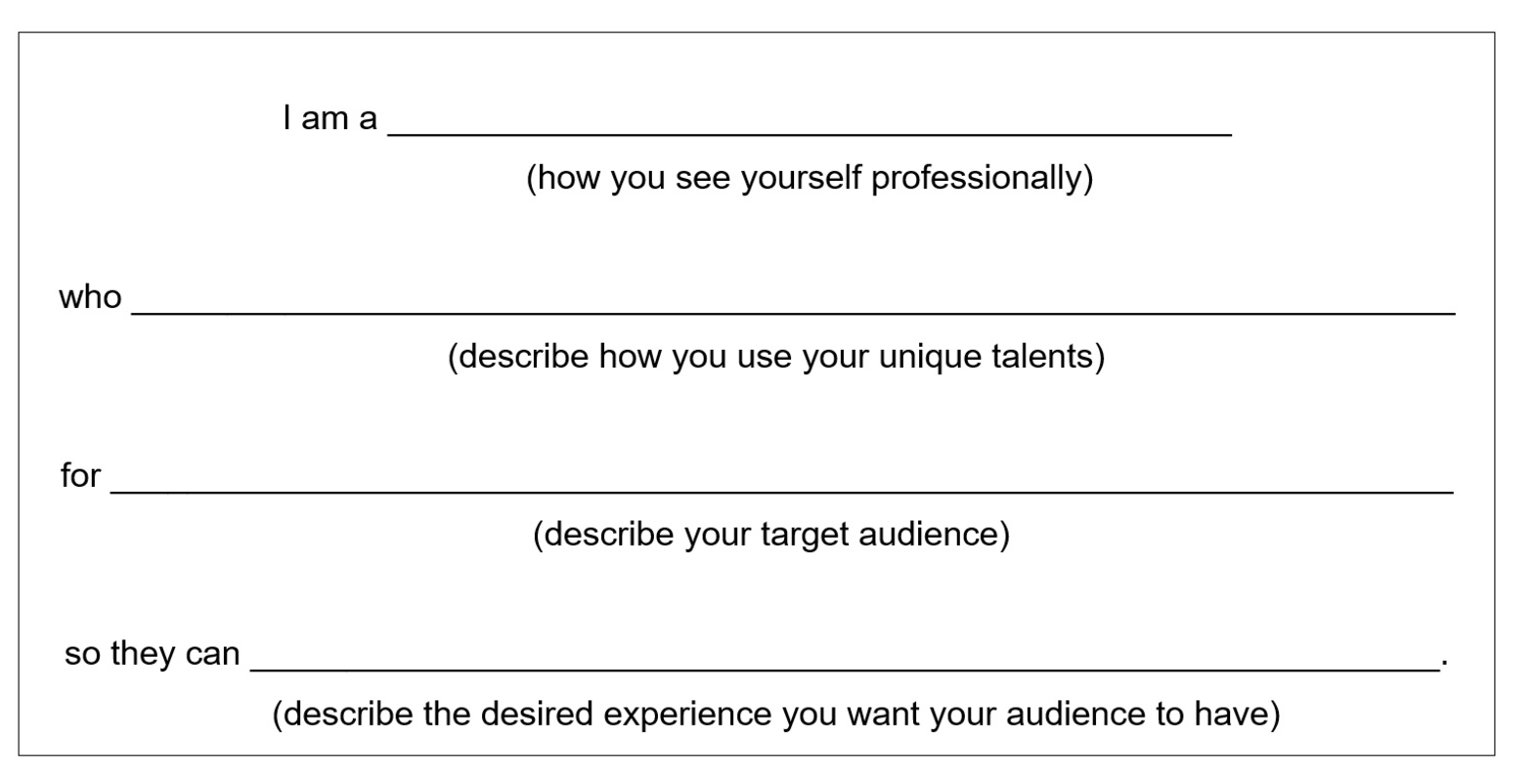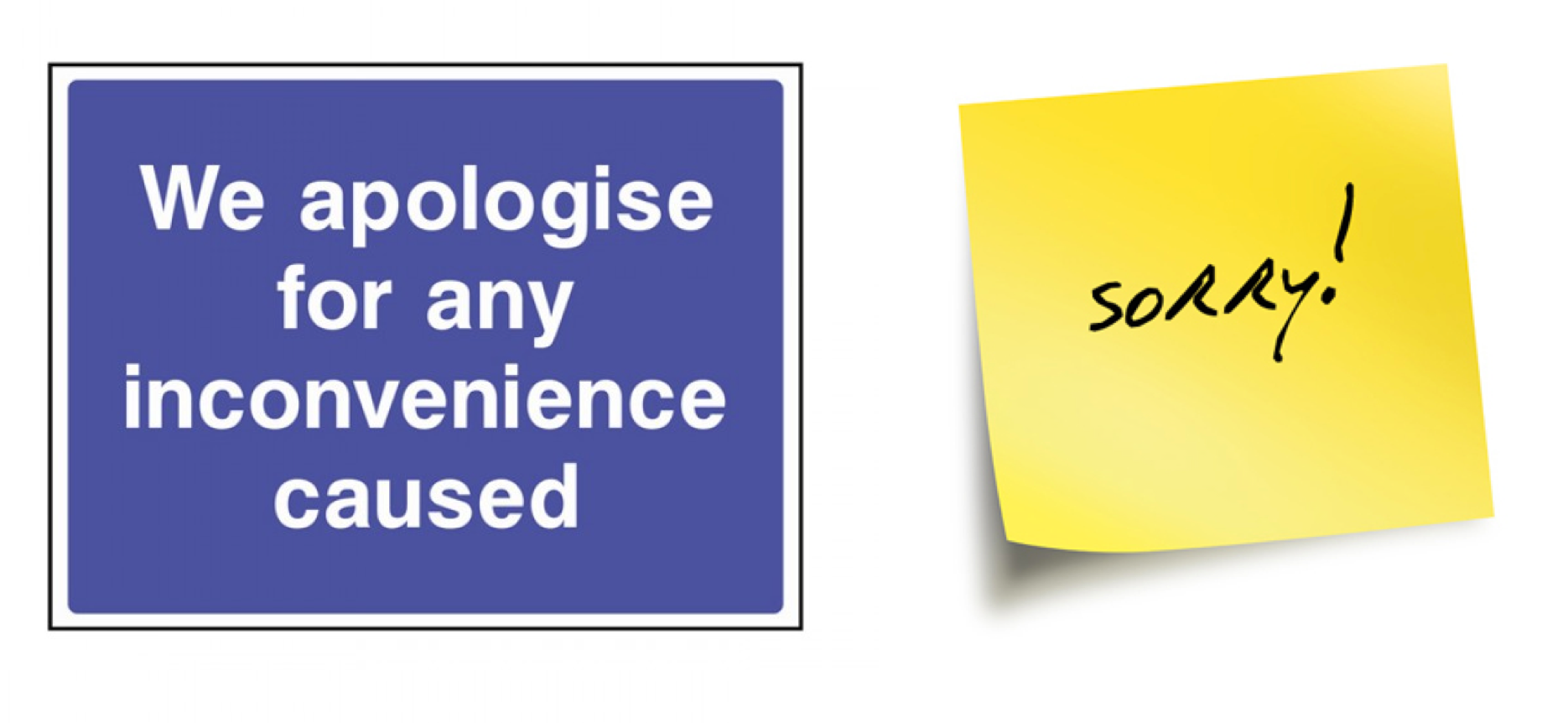In a recent post I discussed why your personal brand matters, and how, as freelancers, it is our responsibility to understand the importance of personal brand and leverage it to grow your business.
The good news is that establishing a personal brand doesn’t have to require a huge amount of time or effort. Every time you engage with clients, deliver a project, network, write for an online publication or speak at an event, you have an opportunity to grow your personal brand. Whether you take it is up to you.
So where to begin? There are many things you can do, both online and offline, but today here are five quick ways to strengthen your personal brand online with relatively little effort.
1) Write Your Personal Brand Statement
Having a well-thought brand statement summarising what you do is an invaluable tool. Whether you use it as your elevator pitch, when networking or in the “about me” section of your website, a brand statement increases your focus when you present yourself to the world. Handily, it will also help you avoid faltering and hesitating next time someone asks you what you do.
Writing your brand statement will be a doodle if you know your USP. If you don’t, consider your ideal client. Who are they? Which one of their problems can you solve? Now shift the focus to you do, how you do it, and the unique talents, passions and specialities you bring to the table. How can you add value to their life or business? Finally, reflect on why a client should engage you and not someone with a similar offering. What makes you different from your competitors?
Your final personal brand mission statement should look something like this:

2) Define Your Brand Values and Personality
Your brand should reflect your personality and values. Understanding and embracing what makes you different is essential to come across as authentic –it’s never been easier to spot a fake.
Your values are your compass and determine your attitudes, choices and actions. We all have them, it’s just that sometimes they’re easier to spot in others than in ourselves. So consider: What is important for you? What gives you a sense of direction? What do you want to project to your customers?
Values can range from adventure to trustworthiness, compassion, creativity to respect, reliability to intuition, leadership to recognition, stability to innovation. Whatever your skill, your values can really make a difference to how you approach the work you do.
Your brand personality will have a lot to do with how you work, and if you get it right, it can help you attract the right kind of audience. Think how your clients, peers and professional contacts would describe you. Are you bubbly? Razor-sharp? Creative? Motivated? Thorough? Direct? Pick a handful of adjectives that define you and you feel comfortable with.
3) Come Up with Your Brand Story
Human beings are hard-wired to love storytelling. Telling your story with honesty, authenticity, transparency and coherence will help you appeal to the emotions of your clients and connect with them.
So, what should your brand story include? It needs to explain who you are, where you come from, what you do and why you do it. A solid narrative will make you more memorable, so craft your story with care. How did you get started in what you do? Was there a turning point? Why do you specialise in certain areas?
Your brand story should also act as a reminder of how uniquely positioned you are to help your potential clients. Make sure you subtly weave into your story the theme of how you add value to your clients. Who have you worked with and how? Remember, potential clients will be asking themselves: what’s in it for me?
You can use your brand story on your website, when people ask you why you do what you do, and generally whenever you have the chance to engage at a deeper level. At the end of the day people buy from people – people they know, like and trust – and storytelling can really help get your message across.
4) Find Your Style
Now you’re done with setting the groundwork for your brand, let’s consider your brand style. What is the look and feel of your brand? A good start is to be consistent in the use of fonts and colour palettes when you present your brand to the world (see “brand assets” below), but other things matter as well.
What’s the tone of voice you use when communicating with your audience? Are you serious, cheeky, fun? Don’t force yourself to use a corporate tone of voice if you’re really a hippie at heart. Make your voice consistent with the real you – it will be much less work, and you’ll effortlessly come across as authentic.

Getting professional help to define your brand style is a luxury for many freelancers, but it’s worth it. If you can’t afford it, but your skills may be valuable for the other party, try bartering. There are also many free online resources to help you define your brand style, from articles on copywriting to colour palette generators, not to forget excellent tools such as Canva.
5) Create or Update Your Brand Assets
Brand assets are the elements that feature your brand and will strengthen it in the mind of your audience. They should be consistent with your brand values, personality and style, and may include:
Photography
We live in a visual world, and good headshots and photographs are essential, so get those sorted first – you’ll need them for a host of things (see below). Get a professional to take them if possible – it makes a huge difference, and it will give you extra credibility.
Content
Written, graphic or audio-visual content is going to be a big part of your brand. You don’t have to be copy-heavy if writing doesn’t come naturally to you, but do find an area where you are happy producing content. Perhaps you like taking photographs of the progress you’re making in the projects you’re working on, or are a fan of microblogging. Pick a medium you’re comfortable with, and remember that quality always wins in the long run.
Paperwork and stationery
You will know by now the importance of adding a signature to every email that you send. But are you doing the same with all your other admin? Chances are you are issuing paper or digital invoices, contracts and even letters. What about those business cards? Are you making the most of every opportunity to communicate your brand? If you are a freelancer, you should also make sure your CVs follow your brand style.
Premises, signage and events
If you have an office that’s open to the public, make sure it reflects your brand – whether it’s in the way it’s decorated or through the external signage you use. The same if you attend events of any kind where you have to set up a stand of some description. Banners, roll-ups or brochures all need to be consistent with all your assets.
Online presence
Your online presence includes a wide variety of assets, from your website, blog or online portfolio to your profiles in social media and online directories. Here is where your professional headshots and other imagery will come in handy. If you contribute to or feature on third party blogs or websites, make sure your profiles are consistent with the ones you control yourself. Strong brands are coherent, and having a good grip on your online presence will help here.
(If you haven’t already, download my free LinkedIn for Freelancers book to know more about how to build your profile in the world’s largest professional network and use it to grow your business).
6) Understand the Power of Brand Boosters
Few things do a better job at giving your personal brand credibility and proof than third party accreditations, quotes and testimonials. If you belong to any professional organisations, are certified by an official body or have won awards that are relevant to your professional persona, make sure your brand or your brand story gets the message across.
Approach current and former clients, partners and colleagues for referrals and endorsements. Social network LinkedIn has a built-in feature to collect recommendations from other people in your network, but remember to ask for permission if you want to use them elsewhere. And use every compliment as an opportunity to get an endorsement – if someone is happy with your work, they probably won’t have any objections to your request.
7) Build Brand Networks
All strong brands have active communities backing them. Building and maintaining a strong network will serve you for years to come, so consider the best ways to grow your network, both online and offline. Where do your clients and potential clients hang out?
Events, from professional conferences and industry trade shows, to training events or local networking opportunities, are often a good bet. Online there is a host of possibilities, including closed industry groups and forums, networks built around online publications and industry blogs.
Of course, social media still rules, and it can be a wonderful tool to build your online networks. Just remember that each network has its own type of audience, way of working and unwritten rules, and that less may be more in some cases.
Personal branding in a nutshell
Building a brand requires a good deal of reflection and some serious action. Invest some time thinking about what you have to offer to the world, what matters to you, who you are and what your story is.
Next, define a brand style that fits with all of the above. Build or update all your assets so they are consistent with your personal brand. Enhance your credibility with the help of third parties. Finally, get out there, grow your network and engage with others.
You will reap the benefits of having a good personal brand for years. Now you know how to go about it, you just have to get started.
Happy branding!


